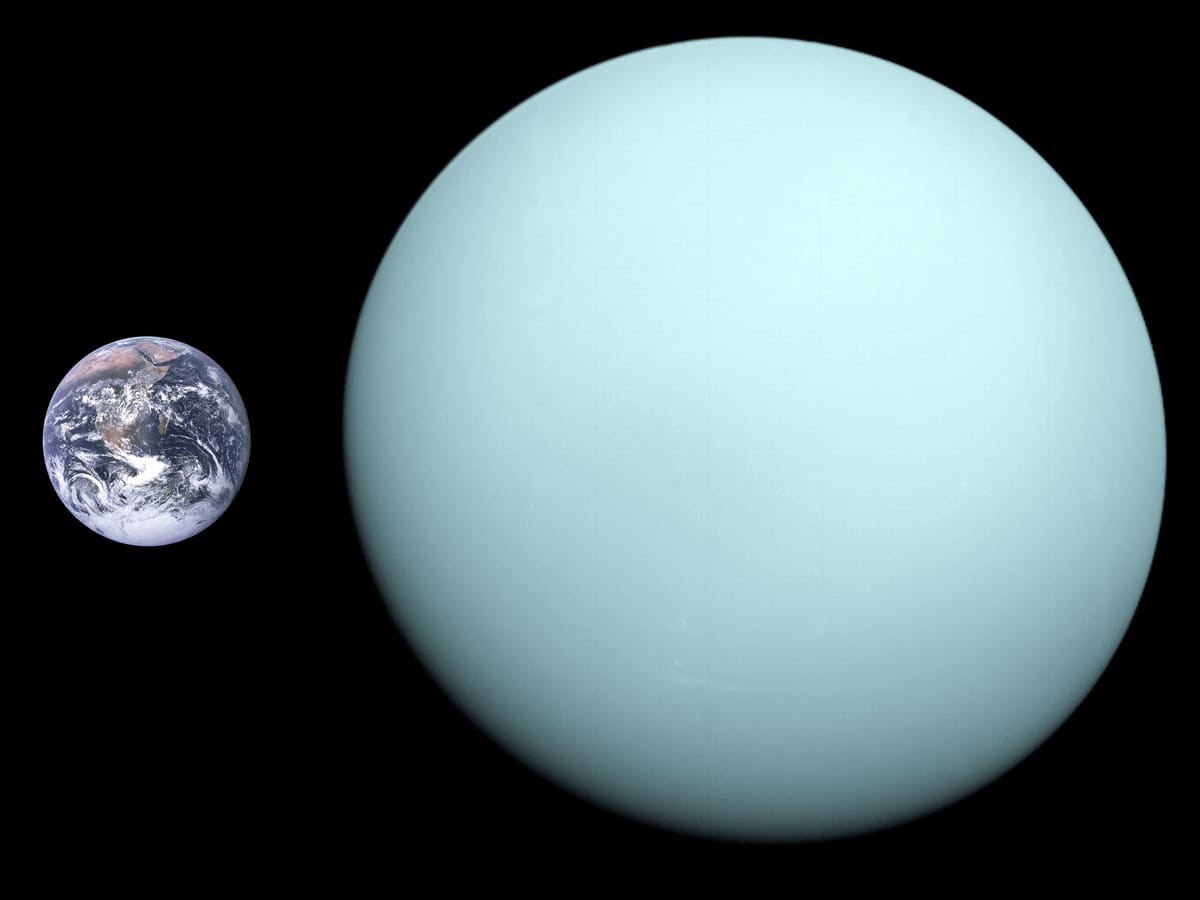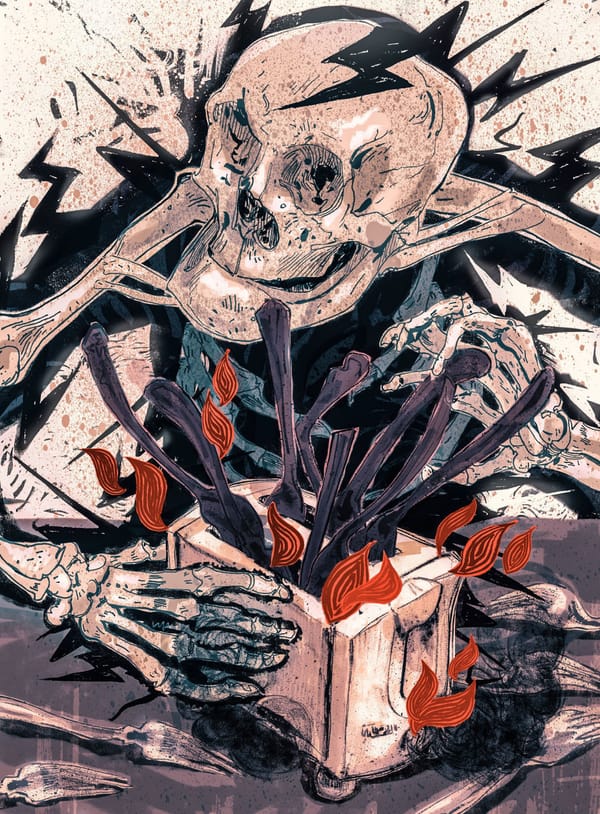it’s big, it’s blue, and it’s really cold but what else is cool about it, and why the awful name?
in ancient times, there were 5 recognized planets (‘sky wanderers’): Mercury, Venus, Mars, Jupiter, and Saturn. these were noted because they were visible to the naked eye and tended to move around in the same pattern all the time. curiously, while Uranus is also visible to the naked eye (admittedly, a very good eye, indeed) it was not thought of as a planet until march 13, 1781, when it was ‘discovered’ by Sir William Herschel, thus expanding the known solar system. it was the first planet discovered via telescope.
unlike all the other planets, Uranus rotates at 97.77 degree
axial tilt, the angle between a planet’s rotational axis and its orbital axis. by comparison, earth has a 23.4 degree axial tilt (you should check out the ‘right-hand rule’ in that axial tilt piece because it’s also really cool). so, this means, as Uranus travels through space, circling the sun every 84 years, there are large parts of it that experience total darkness or total sunlight for long stretches of time. note that the rotational axis remains the same and that the poles always point in the same direction, that not being always directly at the sun. so, as it goes around its orbit, it sometimes is like a rolling ball and sometimes is like a rifling bullet, in relation to the sun. so, each pole experiences 42 years of continued sunlight and 42 years of continued darkness, while the equator experiences either a very thin strip of extremely speedy day-night cycles (when a pole is pointed at the sun almost directly) or a fairly normal day-night cycle when the poles are pointed obliquely from the the sun.
Uranus and Neptune are the ‘ice giants’ in our solar system (Jupiter and Saturn being ‘gas giants’). both Uranus and Neptune are big (14 and 17 times the mass of earth, respectively) and made mostly of a variety of gasses that are far enough away from the sun to be mostly frozen, most of the time. while Neptune lacks a normal sort of planetary core, so it experiences differential rotation (i.e. different parts of the planet spin at different speeds at different times), Uranus’ gasses are a little less cold and it does have a core, so the little spinning core and a host of other forces spin the gasses around enough to cause the planet’s atmosphere to look like a grey-ish haze. also, this spinny-ness on that rotational axis gives Uranus its own set of rings, like Saturn has. and, like Saturn, the rings expand from the planet right at the equator (the horizontal axis). so, since Uranus is lying comparatively sideways, its rings go up and down instead of around the middle. pretty neat.

so, Uranus is unique in its composition and its axial tilt but it is also unique in at least one other way: its name. why the heck would someone opt to call a planet such a silly name, despite the joy it has brought countless young astrologers?
in Greek mythology,
Ouranos is the primal god of the sky. he is the son of Gaia (mother earth) and Aether (heavenly light). he is also the consort of Gaia and, with her, fathered the Cyclopes and the Hekatonchires and the first titans, including, most importantly,
Cronus (not to be confused with
Chronos). he fathered these beings on his mother by visiting her every night and forcing himself upon her. she, understandably, took exception to this, especially after Ouranos had imprisoned his titan children in the bowels of earth (Tartarus), where they caused pain to their mother.
Gaia put out a hit on Ouranos’ virility and the brave Cronus was the only one willing to carry out the deed — he did that with a flint-bladed sickle, castrating his own father, tossing Ouranus’ testicles into the sea. the sea foamed in that spot and from the foam was born the famous and beautiful Aphrodite.
after succeeding in his task, Cronus and his sibling titans took over ruling the universe and thus began a golden age on earth in which there were no laws because everyone did the right thing. Cronus and his sister Rhea remained in charge, with Cronus as the chief titan/god, until they were defeated by their own children, chiefly, Zeus.
so, since Ouranos was really not nice, why would anyone name anything after him?
well, Ouranos is the father of Cronus. And Cronus begat Zeus. And Zeus begat Ares. So… that clears it right up, right? here we run into the tricky part of mythology and history and the Roman propensity for theft.
it is a well-known fact that much of Roman mythology was borrowed from Greek mythology. thus, there are Roman counterparts to most Greek gods (e.g. Dionysus = Bacchus; Hera = Hera; Hades = Pluto; Aphrodite = Venus; Hermes = Mercury). So, as it turns out, Ares = Mars, Zeus = Jupiter, and Cronus = Saturn. So, there had been an ancient naming convention that brought about the names of the classical planets, each father being a little further from earth than the last. So, you take the latinized version of ‘Ouranos’ and you get Uranus, the next father in line. tada!
the thing is, while it might be true that Ouranos is the father of Cronus and, thus, you could say that Uranus is the father of Saturn, it is also true that Ouranos is the god of the sky and that same god, in Roman mythology, is
Caelus. wouldn’t that be so much better as a planetary name? sadly, however, Caelus, is one of the few gods that scholars claim as ‘truly Roman’…
so, we are left with a amazing, cold, and hazy planet, tilted on its side, named after a castrated, mother-wife abusing, titan fathering, god of the sky…
tough go
so far on Uranus




